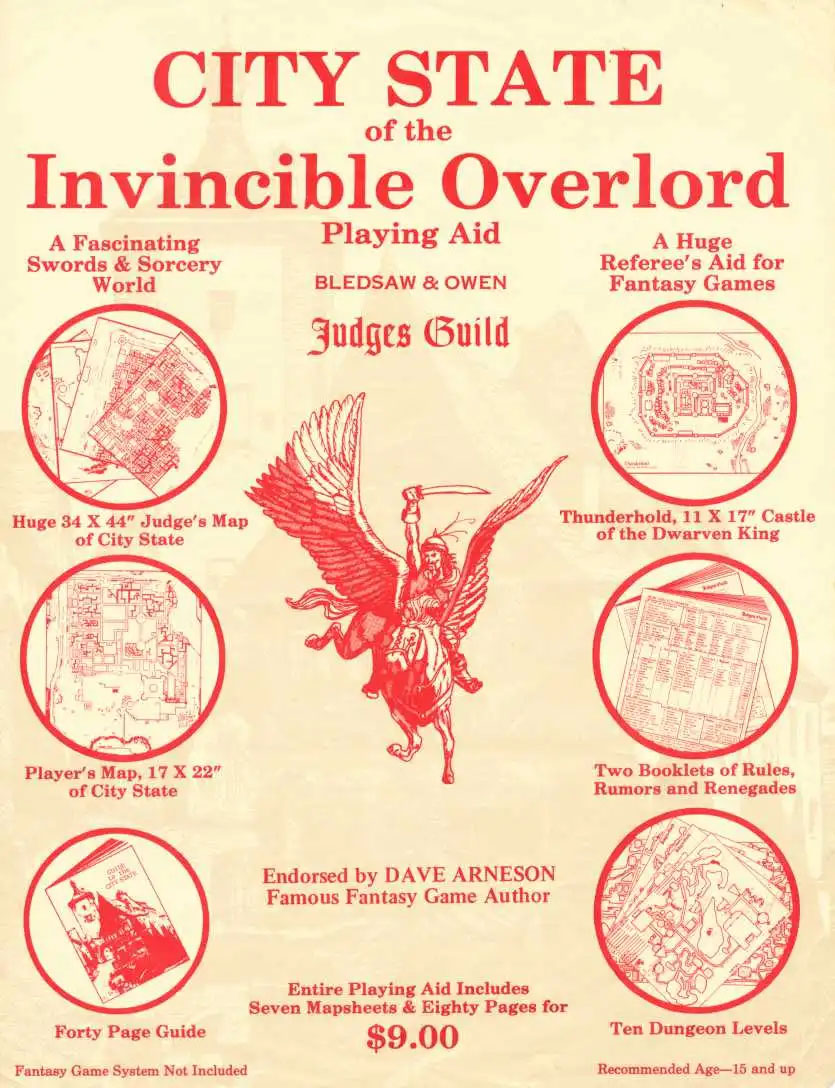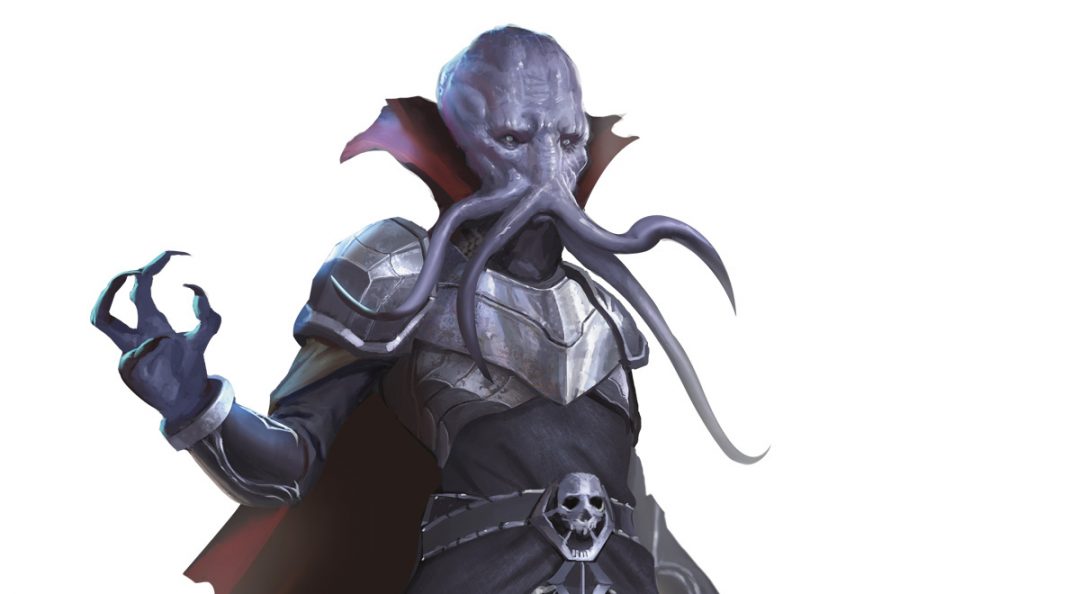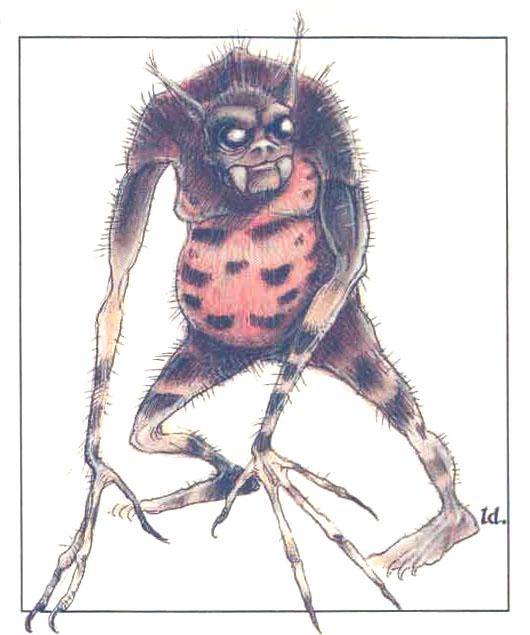Mouser: Okay. Let’s get out of here. I open the door.
GM: When the Gray Mouser opens the door, where’s everyone standing?
Pippin: Ahhhhhhh!!!!!!
Merlin: As far away as possible!
Conan: Rogue go boom!
On the Alexandrian Discord, CorpCord asked, “How do you avoid revealing that a decision is important by framing it, when the characters wouldn’t know?” In other words, there are lots and lots of little, incidental things that our characters do in the game world — e.g., choosing exactly where to stand in a room; picking which tie to wear; deciding whether to drink the white or red wine — that we don’t typically call out or interrogate at the gaming table.
But if a situation arises where that information suddenly becomes vital — e.g., the trapped door is about to explode— the fact that the GM is suddenly asking for it makes it difficult or impossible for the players to make the choice as if they were their characters: Their characters don’t know that their choice of wine is vital (because it’s poisoned), but the player does. And that metagame knowledge will either influence their decision, affect their immersion in the scene, or both.
Let’s consider a few other examples:
- They’re walking down a hall and a trap goes off… what was the marching order?
- The pressure plate for the trap is in the middle of the hall… so are the PCs walking there or are they hugging the walls?
- They’re all back at Suzie’s “safe” house when someone throws a pipe bomb through the window… who was in the living room at that moment?
- The businessman they’re meeting is a close friend of Adlai Stevenson… so is the PC wearing their I Like Ike button?
When dealing with a situation like this we can start by asking ourselves how much benefit of the doubt we should give the players. (For example, is it reasonable to assume that the group is always cautiously backing off whenever the rogue is opening a suspicious door?) This is actually a subset of figuring out the threshold for player expertise triggering character expertise, as described in The Art of Rulings.
The answer here is situational. (Do we assume PCs are as cautious opening a door at the local tavern as they are opening a door in the dungeon?) But it’s also about achieving desired gameplay. I generally recommend leaning towards giving the players the benefit of the doubt (because capricious or unfair “Gotchas!” usually aren’t fun), but if we just assume that the PCs are always doing the optimal action — they always check the chests for traps; they would have obviously hired an NPC security team to keep watch outside their safe house; their character would clearly know to make polite inquiries about the political allegiance of the businessman — then the game starts playing itself, and that isn’t fun, either.
In other words, you need player expertise to activate character expertise. Which means, sometimes, you have to ask the question and tip your hand.
So what can we do about this? Let’s break it down.
First, specific declarations by the players should, obviously, always be respected. For example, if someone said they’re standing in the hall keeping a lookout for goblins, then they’re in the hall. None of the techniques below will cause them to suddenly be standing by the door when the explosion goes off (unless, of course, they make another declaration changing their location).
Next, if there’s a particular type of information that you’re constantly finding yourself wanting, you should set up a standard operating procedure with the players to provide it. Marching order in a dungeon is a good example of this, whether it’s determining who gets hit by a trap or where people are standing when the group is ambushed.
In some cases, you might have multiple SOPs and the players can indicate which one they’re currently using. For example, in an urban campaign what you’re wearing might be frequently important, so the group might be in Adventuring Gear or High Social — and, in each case, everyone at the table will know what outfit each PC is wearing.
If you don’t have an SOP, then one technique is to lay down a false trail. In other words, don’t ask the players where their characters are standing ONLY when the rogue is about to open a trapped door. Instead, occasionally ask them for “incidental” details like that when there’s no risk. This obfuscates the metagame knowledge being imparted by the question.
You can also strategically use this technique to build up a bunch of false tension… and then releasing it with a feeling of relief when nothing happens. (If you’re wondering why you’d want to do this, check out how horror movies use this technique.) Even better, this can also result in the players getting lulled into a false sense of security. (“Justin’s just trying to scare us again. You’re not fooling me this—” BOOM!)
You can further throw them off the trail by using these declarations to, instead of assessing danger, paint the scene. For example, you can ask everyone where they’re at or what they’re doing in the safe house and then use that information to give a little description of what everyone is doing. This can help to draw the players into the reality of the game world (by getting them to actually form a specific picture of what their character is doing)… while also setting them up for those moments when the same or similar question is determining where they’re at when the pipe bomb goes off.
Another effective technique is to vary the right answer when asking these hand-tipping questions. Instead of a trapped door exploding and hurting everyone close by, for example, it might be a situation where everyone taking shelter suddenly finds themselves stuck outside the room by a force field. Or maybe when the rogue touches the weird, glowing blue sphere, everyone within ten feet gets blessed.
Building this type of variation into your scenario design means that, even if the players are triggered by the metagame knowledge that you’re asking the question, they’ll still need to think about what their answer will be. (Instead of just automatically running as far away as they can.)
Basically, all of this is aimed at allowing their character to be competently aware of the heightened stakes of a situation, while not necessarily giving them the equivalent of a spidey-sense that unerringly warns them of incoming danger. False alarms, mixed signals, reversed expectations, and the like can all help.
Along similar lines, you can disguise the question by getting the incidental information you need as part of a different question. For example:
GM: The door is locked.
Conan: I’m going to kick it open!
GM: Is anyone helping Conan force open the door?
This is a mechanically significant question (since it will give Conan a bonus on their Open Door check), but you’re also sneakily establishing who’s at the door. (And, using benefit of the doubt, you could then infer that anyone not helping is standing far enough back not to get hit by the trap.)
Another effective disguise can be hiding the question in a little throwaway add-on to a different question. For example, as you’re getting ready to transition to the PCs’ meeting with Paul Dubois:
GM: Okay, you finish feeding the corpse into the wood chipper and then dump the chunks into the tank. You’re covered in blood, but the sharks will take care of the body.
Suzie: Well… I probably shouldn’t walk around town looking like this. I’ll head back to the safe house and get changed.
GM: Give me a Stealth check to see if you can cross town without anyone noticing your appearance.
Suzie: 12.
GM: Great. You make it back to the safe house without incident. After stripping off your blood-soaked track suit, what’s your new outfit?
Here the question of, “What are you wearing?” (i.e., will you mention your favorite I Like Ike pin?) seems to just naturally emerge from the chain of events. You could even reinforce this by waiting for Suzie to describe her outfit, and then saying something like, “Okay, it takes about an hour to get cleaned up, but then Suzie walks out the front door in her beautiful blue dress…” (By using the information to paint the scene, you’ve also provided an explanation for why you collected that information.)
Finally, you can enhance all of these techniques by anticipating the decision. For example, if you know that the door out of the room is trapped, don’t wait until someone goes over to the door to figure out where everyone is standing. Instead, ask the question early. The players might get suspicious… but then nothing immediately happens, so they’ll assume you were just trying to spook them. Or you take that information and use it to re-establish the scene, so they just dismiss it as part of the natural flow of the scene. But then, having established the scene (“so while Conan is poking at the pile of rags, Merlin is studying the orrery”), you now know exactly where everyone is and will continue to be unless they explicitly declare that they’re moving.
Now, when the rogue heads over and starts checking out the door, you don’t need to ask the question again, and the players are never tipped off.
Thanks to CorpCord for asking the question that inspired this tip.


















